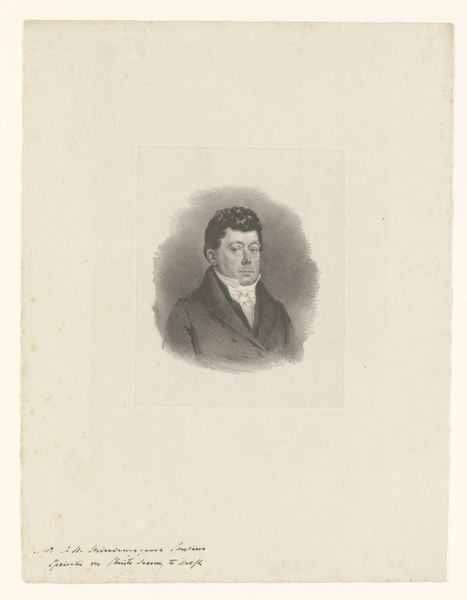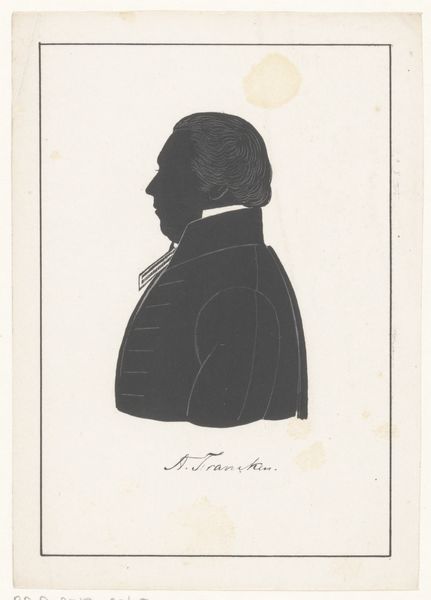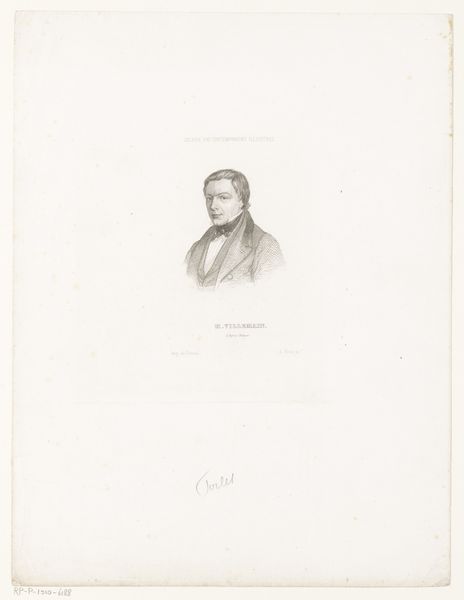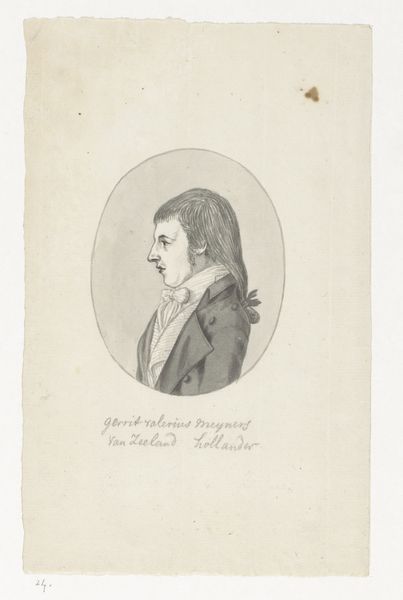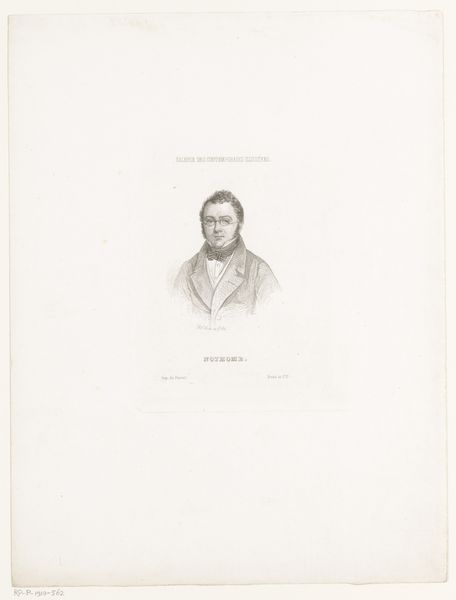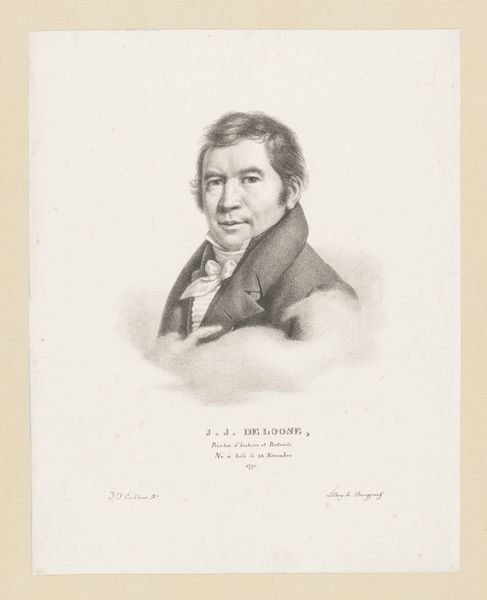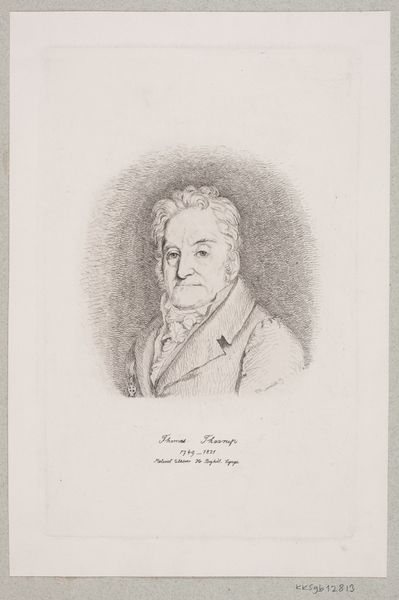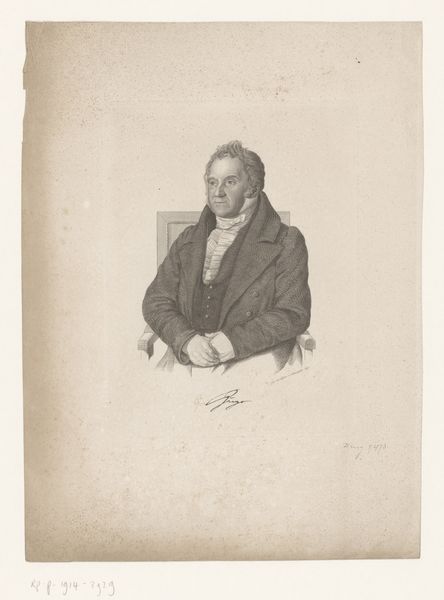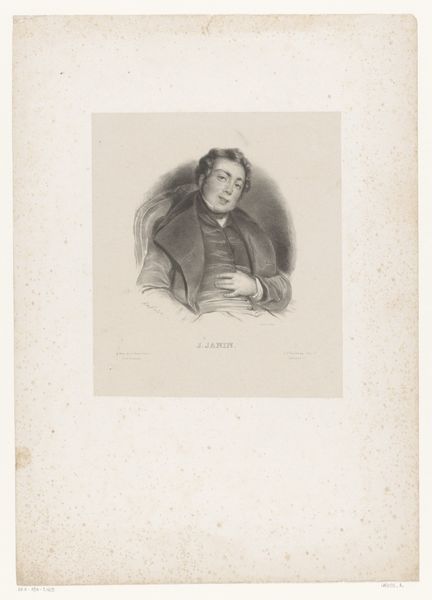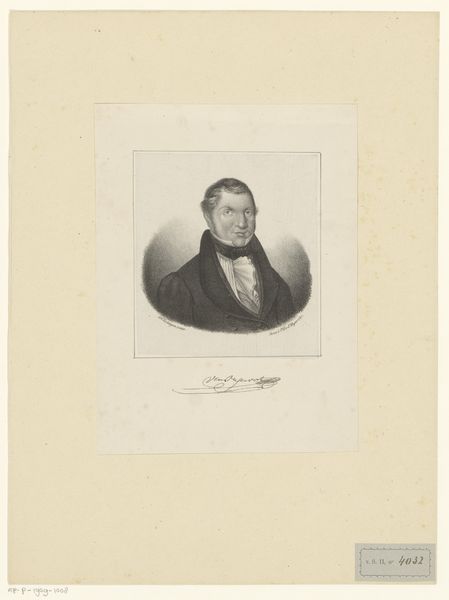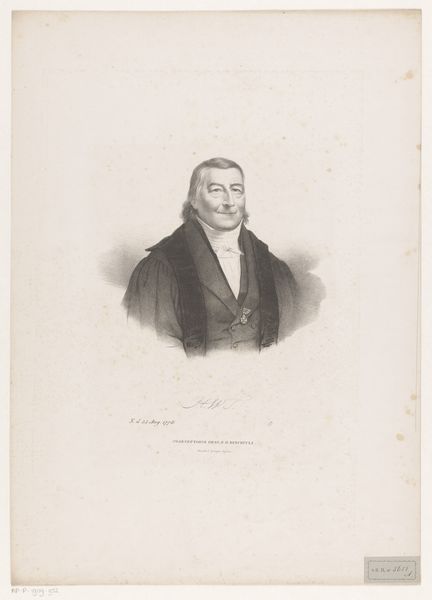
Dimensions: height 272 mm, width 211 mm
Copyright: Rijks Museum: Open Domain
Curator: Welcome. Here we see C. Dittmarsch's "Portret van Justinus Andreas Christian Kerner," an engraving made sometime between 1824 and 1899. Editor: It has a subdued feel to it. The hatching and cross-hatching define form without calling attention to themselves. The detail, considering it's an engraving, is striking. Curator: Dittmarsch's rendering reflects the Romantic era's fascination with portraiture. The rising merchant classes craved imagery reaffirming their place in society, so prints like this were widely circulated and displayed. Editor: Observe the light. It seems to gently sculpt Kerner’s face, particularly around the cheekbones and forehead, giving him a contemplative, almost ethereal quality. Curator: And he likely was! Justinus Kerner was a physician and poet, a leading figure in the Swabian School of Romanticism. Dittmarsch's print helped cement his image. Its distribution helped disseminate romantic values among the German-speaking public. Editor: You can see how the sharp lines of the engraving capture not just the appearance but almost seem to define the sitter’s temperament. It projects quiet confidence, would you agree? Curator: In a way, yes. Yet the print serves more as a testament to Kerner's cultural impact, reflecting the cult of personality that flourished in 19th-century intellectual circles. Its success speaks to a public eager to embrace Romantic ideals of individualism. Editor: And looking at Dittmarsch’s craftsmanship, that delicate balance between realism and romanticism is quite the achievement in its own right. It has its own beauty too. Curator: Yes. It is through these accessible prints, that figures like Kerner and the ideals of Romanticism found their way into everyday life, shaping perspectives in lasting ways. Editor: Dittmarsch captured a sense of quiet dignity. Even in its stark simplicity, it reveals volumes. Curator: Indeed, this engraving opens a window onto the cultural currents that defined 19th-century Germany. I hope that our brief discussion helped deepen your understanding.
Comments
No comments
Be the first to comment and join the conversation on the ultimate creative platform.
